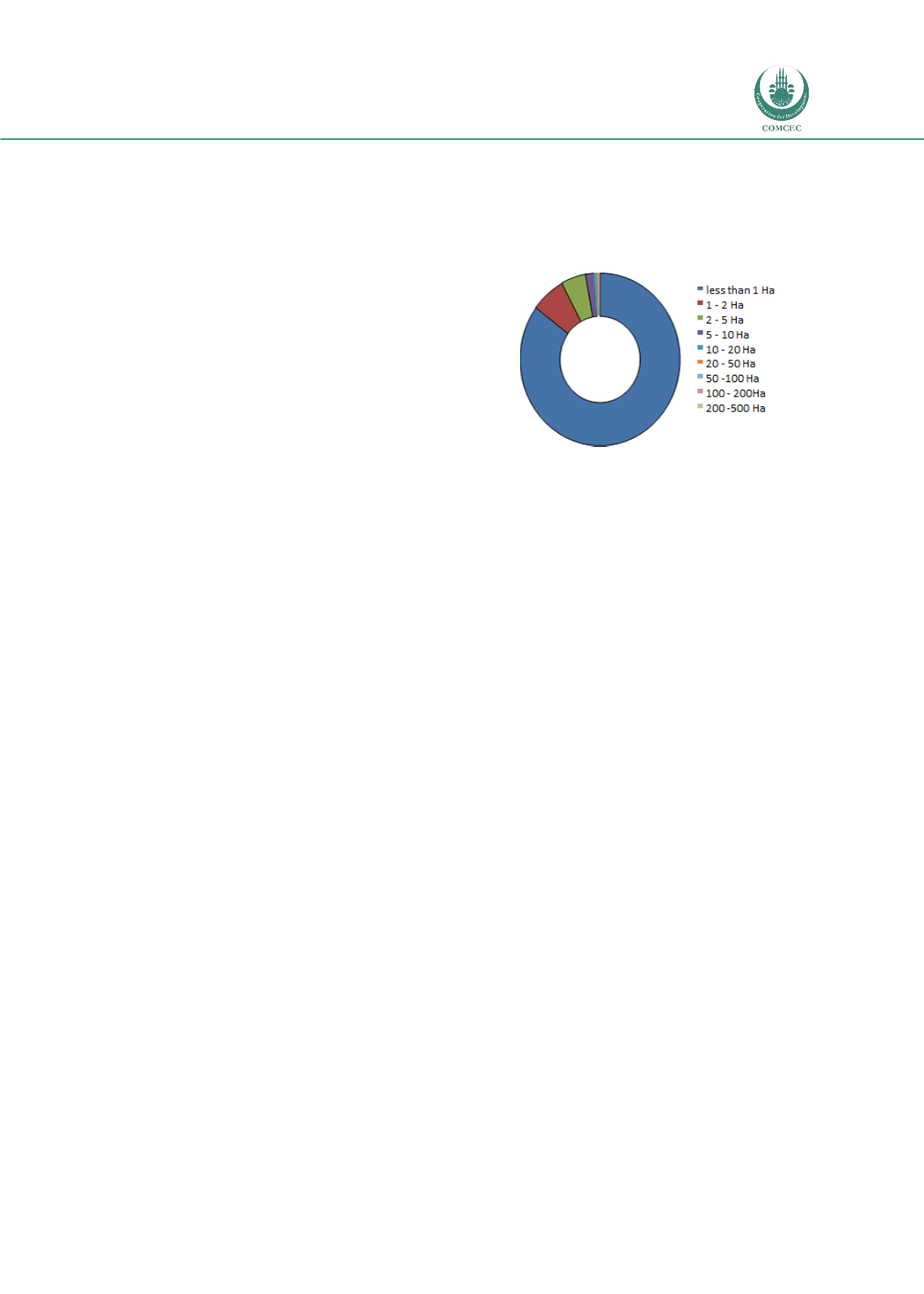

Facilitating Smallholder Farmers’ Market Access
In the OIC Member Countries
91
Operating private peasant farms and household farms, smallholders generate about 98
percent of agricultural output. They produce 98 percent of fruit and vegetables, 97 percent
of grains, and 95 percent of potatoes and cotton. Smallholder farming can be described as
semi-subsistence:
Households
consume the crops they grow and
sell small amounts of produce on the
market.
Kyrgyz Republic is geographically,
climatically, and culturally divided
into northern and southern regions.
The
three
southern
oblasts
(provinces) (Batken, Jalalabad, and
Osh) have a distinct regional identity
vis-à-vis the northern provinces
(Chui, Issyk Kul, Naryn, and Talas).
The southern region is more oriented
to crop production, has smaller farms (0.4 hectares), and the climate favors the production
of fruit, vegetables, cotton, and rice. The northern region is oriented more toward
livestock production. Farms are larger (above 1.0 hectare), and the climate favors the
production of grains, fodder crops, and potatoes. Major export outlets are located in Osh
City (southern region) and Bishkek City (northern region).
Demand and market size
Average daily per capita calorie consumption in Kyrgyz Republic increased by 16 percent
between 2000 and 2009, mostly because of increased consumption of cereals and
vegetable oils
(Figure 57). Over the same period, meat consumption declined by about 10
percent, but at 197 kilocalories per capita per day on average, it is higher than meat
consumption in the eight other OIC member countries studied here. Milk, meat, and
potatoes are the most important commodities in terms of farm revenue
(Figure 58).
FIGURE 56: FARM SIZE DISTRIBUTION IN KYRGYZ REPUBLIC,
2002
Source:
Lowder, Skoet and Singh, 2014.

















